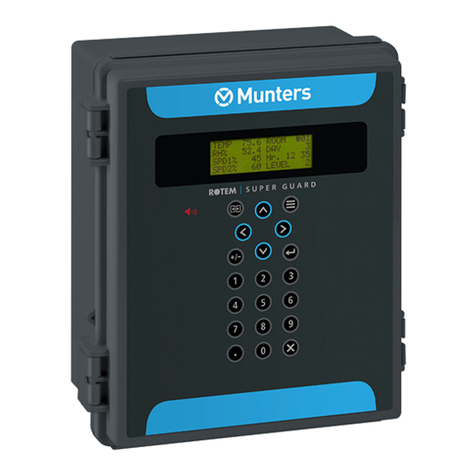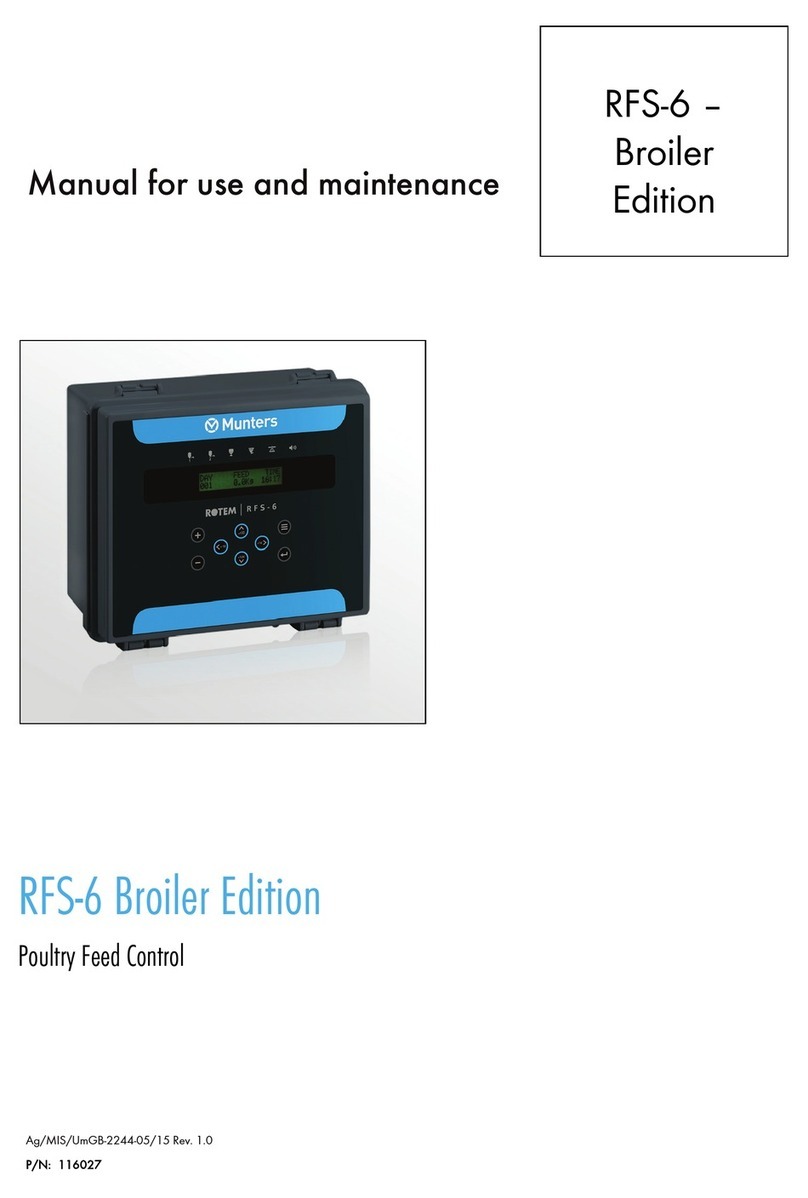
© Munters AB, 2020 4
3.5 Pressure Sensor Hoses......................................................................................... 30
3.6 Key .......................................................................................................................... 31
3.7 Product Symbols ................................................................................................... 31
4TRIOAIR .................................................................................................................................... 32
4.1 Trio Air Accounts .................................................................................................. 32
4.2 Pairing a Trio......................................................................................................... 33
5SPECIFICATIONS.................................................................................................................... 37
6USING THE TRIO TOUCH SCREEN ..................................................................................... 38
6.1 Icons ...................................................................................................................... 38
7MAPPING AND DEFINING THE INPUT OUTPUT DEVICES............................................40
7.1 Mapping Devices ..................................................................................................40
7.2 Temperature Sensors ........................................................................................... 44
7.2.1 Defining the Temperature Sensors ...............................................................
44
7.2.2 Mapping the Temperature Sensors...............................................................
44
7.2.3 Enabling a Weather Station............................................................................. 45
7.3 Ventilation Devices............................................................................................... 46
7.3.1 Defining the Fans.................................................................................................
46
7.3.1.1 On-Off Fans................................................................................. 46
7.3.1.2 0 – 10 Volt Fans ............................................................................47
7.3.2 Defining the Stir Fan...........................................................................................
48
7.3.2.1 On Off Stir Fan............................................................................. 48
7.3.2.2 0 – 10 Volt Stir Fan...................................................................... 49
7.4 Sensors.................................................................................................................. 50
7.4.1 Defining the Ammonia Sensor........................................................................
50
7.4.2 Defining the CO2 Sensor.................................................................................... 51
7.4.3 Defining the Humidity Sensor......................................................................... 52
7.4.4 Defining the Water Meter Sensors................................................................ 53
7.4.5 Defining the Gas Meter Sensors..................................................................... 54
7.5 Heating Devices.................................................................................................... 55
7.5.1 Defining the On/Off Heaters........................................................................... 55
7.5.2 Defining the Variable Heaters.........................................................................
56
7.6 Defining the Cooling Devices................................................................................57
7.7 Potentiometers, Inlets, Tunnel Doors, Outlets................................................... 58
7.7.1 Mapping the Potentiometers ..........................................................................
58
7.7.2 Defining the Inlets/Tunnel Doors ..................................................................
59
7.7.2.1 Potentiometer Calibration .......................................................... 60
7.7.2.2 Calibrating the Inlets/Tunnel Door............................................ 60
7.7.3 Defining the Outlet............................................................................................. 62
7.8 Defining the Sprinkler .......................................................................................... 63
7.9 Defining the Same As Relays............................................................................... 64































